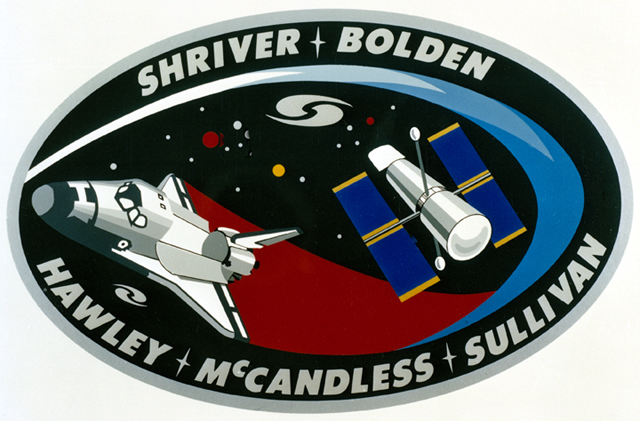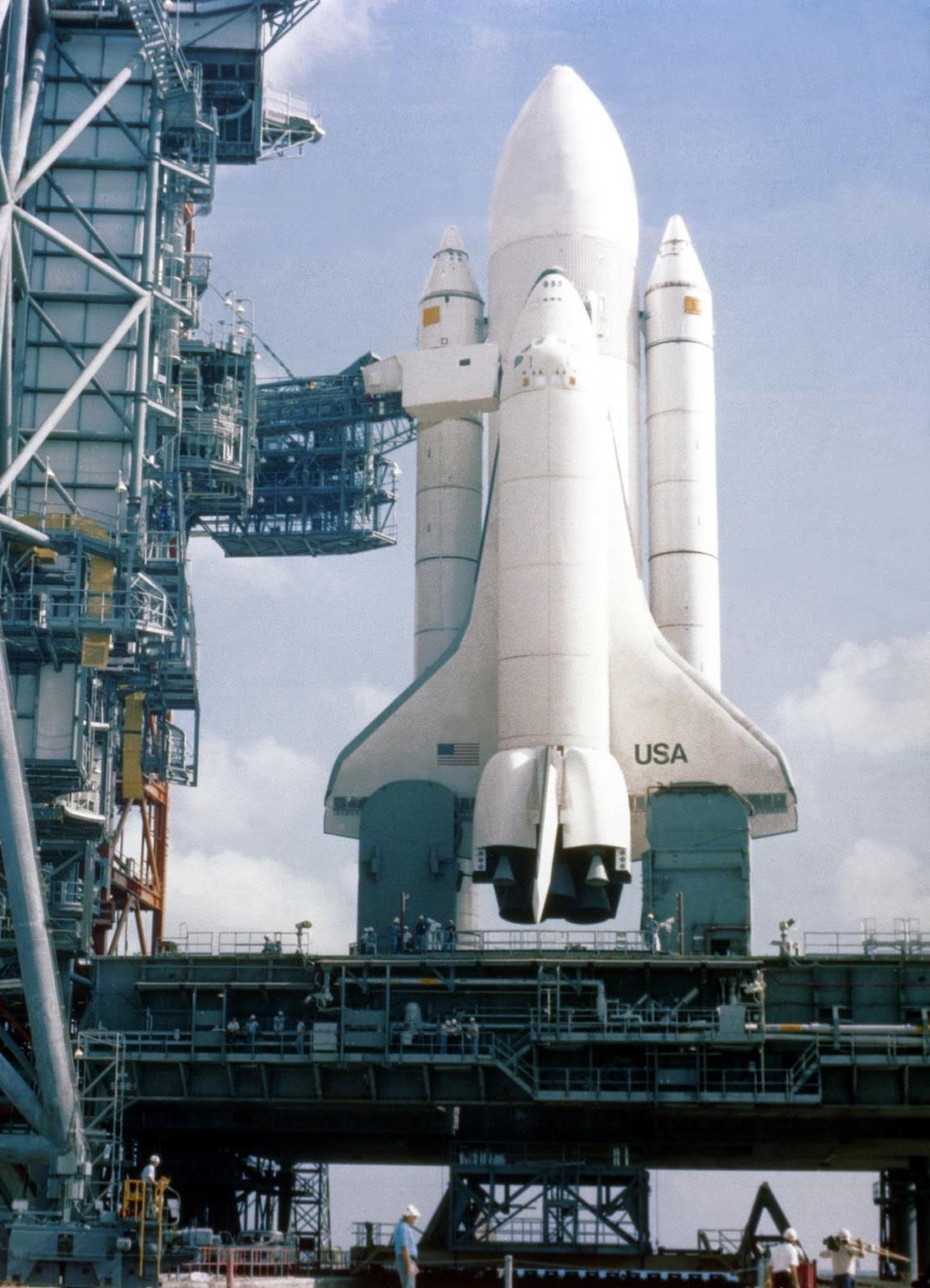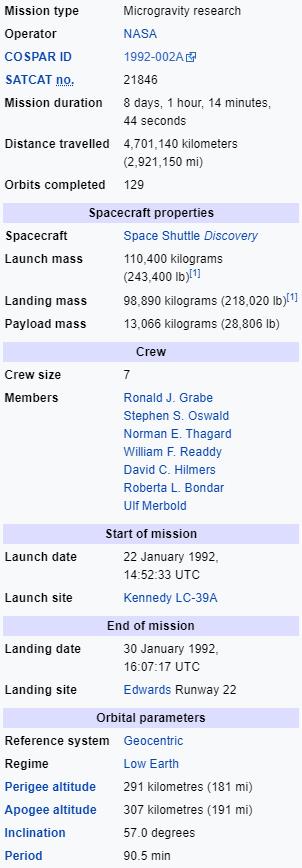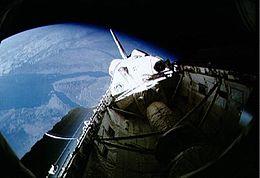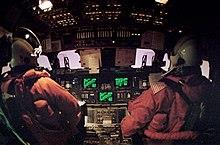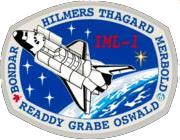
STS-42 was a Space Shuttle Discovery mission with the Spacelab module. Liftoff which was originally scheduled for 8:45 EST (13:45 UTC) 22 January 1992, but the launch was delayed due to weather constraints. Discovery successfully lifted off an hour later at 9:52 EST (14:52 UTC).The main goal of the mission was to study the effects of microgravity on a variety of organisms. The shuttle landed at 8:07 PST (16:07 UTC) on 30 January 1992 on Runway 22, Edwards Air Force Base, California.STS-42 was the first of two flights in 1992 of Discovery, the second of which occurred during STS-53, which launched on 2 December 1992. The mission was also the last mission of the Space Shuttle Discovery to have a seven-member crew until STS-82, which was launched on 11 February 1997.
Landing: 30 January 1992, 8:07:17 am PST, Runway 22, Edwards Air Force Base, CA., Rollout distance: 9,811 feet. Mission extended one day for continued scientific experimentation. Orbiter returned to Kennedy Space Center on 16 February 1992. Landing Weight: 218,016 pounds (98.890 Mg).
Ronald J. Grabe
Pilot:
Stephen S. Oswald
Norman E. Thagard
David C. Hilmers
William F. Readdy
Payload Specialist 1 CSA:
Roberta L. Bonar
Payload Specialist 2 ESA:
Ulf D. Merbold
41g
M
8
SM
Sub-Menu
menu
-
42
43
44
45
46
47
48
A free template by Lucknowwebs.com for WYSIWYG WebBuilder 8
Astronauts:
STS-42
Study
Research
Main Index
Space Cosmology
Science Research
*
About
Science Research
Science Theories
Desk
Site Map
BookShelf
Copyright © by Nigel G Wilcox · All Rights reserved · E-Mail: ngwilcox100@gmail.com
Designed by Nigel G Wilcox
Powered By AM3L1A
Pages within this section: USA Shuttle Mission Flights
STS-42
Pages within this section:
Command Pilot:
The Space Shuttle Missions
Third Space Flight
First Space Flight
(Fourth Space Flight - Mission Specialist 1):
(First Space Flight - Mission Specialist 2):
(Fourth Space Flight - Mission Specialist 3):
Spacelab Module LM2 in Discovery's payload bay, serving as the International Microgravity Laboratory
Carried into orbit the International Microgravity Laboratory-1 (IML-1), a pressurized manned Spacelab module, to explore in depth the complex effects of weightlessness on living organisms and materials processing. The international crew, divided into Red and Blue teams, conducted experiments on the human nervous system's adaptation to low gravity and the effects of microgravity on other life forms such as shrimp eggs, lentil seedlings, fruit fly eggs and bacteria. Low gravity materials processing experiments included crystal growth from a variety of substances such as enzymes, mercury iodine and a virus. Other payloads included 10 Get Away Special (GAS) canisters, a number of middeck payloads and two Shuttle Student Involvement Program (SSIP) experiments. Middeck payloads included Gelation of SOLS: Applied Microgravity Research (GOSAMR), Investigations into Polymer Membrane Processing (IPMP) and the Radiation Monitoring Experiment (RME-III).



